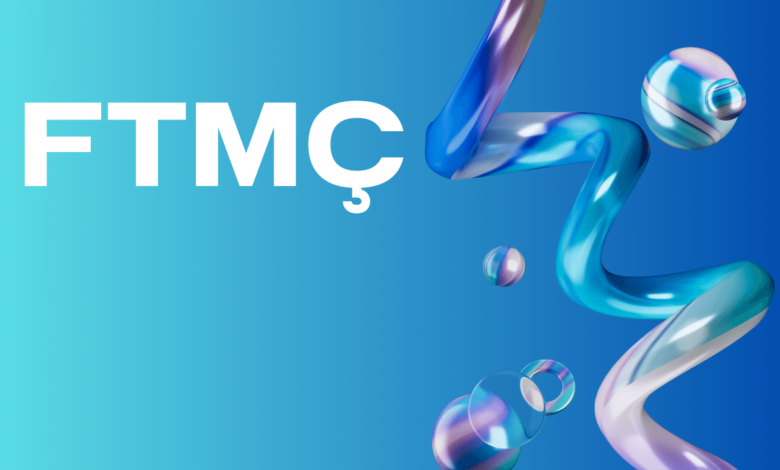
FTMÇ, an acronym that encapsulates a world of creativity, expression, and cultural significance, is a testament to human artistry’s rich tapestry. In this exploration, we delve into the intricate nuances of FTMÇ, uncovering its unique expression and style that captivates audiences worldwide.
Understanding FTMÇ
FTMÇ, pronounced as “ef-tee-em-ce,” is a term that encompasses a diverse array of artistic expressions, spanning visual arts, music, dance, and beyond. Rooted in cultural traditions yet embracing modern influences, FTMÇ embodies a fusion of heritage and innovation, making it a dynamic and evolving art form.
The Cultural Significance
At its core, FTMÇ serves as a reflection of cultural identity and heritage. FTMÇ artists convey narratives of their communities, histories, and beliefs through intricate patterns, vibrant colors, and rhythmic movements. Each brushstroke, note, or step carries layers of meaning, inviting viewers to immerse themselves in the cultural tapestry woven by FTMÇ.
Exploring Unique Expression
What sets FTMÇ apart is its unparalleled ability to convey emotion and storytelling through artistic mediums. Whether it’s the hypnotic rhythm of a traditional drumbeat or the intricate geometries adorning a piece of textile, FTMÇ artists infuse their work with a sense of depth and complexity that resonates with audiences on a profound level.
From elaborate calligraphy to mesmerizing dance performances, FTMÇ artists push the boundaries of creativity, constantly innovating while staying true to their cultural roots. The result is a rich tapestry of artistic expression that captivates the senses and sparks the imagination.
Unraveling the Style
FTMÇ is characterized by its distinct style, intricate designs, bold colors, and dynamic movements. Whether it’s the fluid lines of a traditional motif or the syncopated beats of a percussion ensemble, FTMÇ style is instantly recognizable and inherently captivating.
Across different mediums and forms, FTMÇ artists infuse their work with a sense of rhythm and harmony that transcends language and culture. From the ornate decorations of a ceremonial garment to the graceful gestures of a dance performance, the FTMÇ style celebrates beauty, symmetry, and craftsmanship.
Exploring Symbolism and Tradition
FTMÇ art is often steeped in symbolism and tradition, with each motif and design carrying deep cultural significance. From symbols representing fertility and abundance to patterns denoting familial lineage, FTMÇ artists use their work to preserve and transmit cultural heritage from one generation to the next. Through these symbols, viewers gain insight into the values, beliefs, and rituals of the communities from which FTMÇ originates.
Innovations in Contemporary FTMÇ
While rooted in tradition, FTMÇ is not immune to the winds of change. In contemporary settings, artists are embracing new techniques and materials to push the boundaries of what FTMÇ can be. Mixed-media installations, digital art, and interdisciplinary collaborations are becoming increasingly common, breathing fresh life into this ancient art form. Yet, even as FTMÇ evolves, it remains firmly anchored in its cultural roots, serving as a bridge between past and present, tradition and innovation.
The Global Influence of FTMÇ
Beyond its cultural origins, FTMÇ has garnered international acclaim and influence, transcending geographical boundaries to captivate audiences worldwide. From museum exhibitions showcasing the works of master FTMÇ artists to international festivals celebrating the diversity of FTMÇ expression, the global reach of this art form continues to expand. Through cross-cultural exchange and collaboration, FTMÇ serves as a unifying force, fostering understanding and appreciation among diverse communities.
Preserving and Promoting FTMÇ Heritage
As FTMÇ gains recognition globally, efforts to preserve and promote its heritage have become increasingly important. Cultural institutions, government agencies, and grassroots organizations are working together to document, archive, and safeguard FTMÇ artifacts, ensuring that future generations can continue to experience its beauty and significance. Additionally, initiatives aimed at promoting FTMÇ education and training empower aspiring artists to carry forward the legacy of their ancestors while forging new paths of creative expression.
Embracing Diversity and Inclusion
In an increasingly interconnected world, FTMÇ has become a symbol of diversity and inclusion, transcending cultural, social, and political divides. Through collaborations with artists from diverse backgrounds and communities, FTMÇ has the power to foster dialogue, promote understanding, and celebrate the richness of human experience. By embracing diversity and inclusion, FTMÇ enriches our cultural landscape and reminds us of the interconnectedness of all humanity.
Celebrating Ritual and Ceremony
FTMÇ is often intertwined with ritual and ceremony, which are central to cultural celebrations and religious observances. From intricately woven textiles used in traditional ceremonies to rhythmic dances performed during festive occasions, FTMÇ adds color, vibrancy, and meaning to rituals passed down through generations. These rituals serve as occasions for celebration and opportunities for communities to come together, strengthen bonds, and reaffirm shared values and beliefs.
Adapting to Modern Challenges
While FTMÇ has a rich history and cultural significance, it also faces challenges in the modern world. Economic pressures, environmental changes, and social shifts can threaten the sustainability of traditional FTMÇ practices. In response, communities and artists are finding innovative ways to adapt, whether through sustainable sourcing of materials, revitalizing traditional techniques, or leveraging digital platforms to reach new audiences. By embracing innovation while honoring tradition, FTMÇ continues to evolve and thrive in the face of modern challenges.
Empowering Marginalized Voices
In many communities, FTMÇ serves as a tool for empowerment, particularly for marginalized groups whose voices have historically been silenced or marginalized. Through art workshops, community projects, and advocacy efforts, FTMÇ provides a platform for marginalized individuals to express themselves, share their stories, and assert their rights. By amplifying these voices, FTMÇ contributes to greater social justice and equity, challenging stereotypes and fostering greater understanding and empathy within society.
Promoting Cross-Cultural Dialogue
As FTMÇ gains recognition globally, it has catalyzed cross-cultural dialogue and exchange. Artists from different backgrounds and traditions collaborate, share ideas, and learn from one another, transcending linguistic, cultural, and geographical barriers. These collaborations enrich the artistic landscape and promote mutual respect, appreciation, and understanding among diverse communities. Through FTMÇ, individuals worldwide find common ground and forge connections that transcend borders and boundaries.
Investing in the Future of FTMÇ
As we look to the future, investing in the preservation and promotion of FTMÇ is essential for generations to come. This includes supporting artists and artisans, fostering educational initiatives, and creating cultural exchange and collaboration opportunities. By investing in the future of FTMÇ, we ensure that this rich and diverse art form continues to inspire, educate, and unite people from all walks of life, enriching our shared cultural heritage and collective human experience.
Conclusion
In conclusion, the artistry of FTMÇ is a testament to the enduring power of human creativity and expression. Through its unique style, rich symbolism, and global influence, FTMÇ continues to captivate audiences and inspire artists across the globe. As we celebrate the diversity and innovation of FTMÇ, let us also recognize the importance of preserving its cultural heritage and promoting its values of inclusivity and unity.
FAQs
What exactly is FTMÇ, and what does it encompass?
FTMÇ, pronounced “ef-tee-em-ce,” is an acronym that represents diverse artistic expressions, including visual arts, music, dance, and more. It embodies a fusion of tradition and innovation, rooted in cultural heritage while embracing modern influences.
How does FTMÇ contribute to cultural preservation and expression?
FTMÇ reflects cultural identity and heritage, conveying narratives of communities, histories, and beliefs through intricate patterns, vibrant colors, and rhythmic movements. It plays a central role in cultural celebrations, religious rituals, and everyday life, preserving and transmitting cultural traditions from one generation to the next.
How is FTMÇ evolving in contemporary settings?
While rooted in tradition, FTMÇ is evolving in response to modern challenges and influences. Artists are incorporating new techniques, materials, and technologies to push the boundaries of FTMÇ. Mixed-media installations, digital art, and interdisciplinary collaborations are becoming increasingly common, reflecting the dynamic nature of this ancient art form.
What efforts are being made to preserve and promote FTMÇ heritage?
Cultural institutions, government agencies, and grassroots organizations work together to document, archive, and safeguard FTMÇ artifacts. Additionally, initiatives aimed at promoting FTMÇ education and training empower aspiring artists to carry forward the legacy of their ancestors while fostering greater appreciation and understanding of FTMÇ within society.
How does FTMÇ contribute to social justice and empowerment?
FTMÇ serves as a tool for empowerment, particularly for marginalized groups whose voices have historically been silenced or marginalized. Through art workshops, community projects, and advocacy efforts, FTMÇ provides a platform for marginalized individuals to express themselves, share their stories, and assert their rights, promoting greater social justice, equity, and inclusion.




